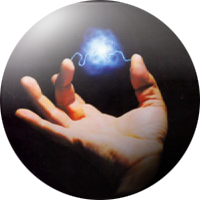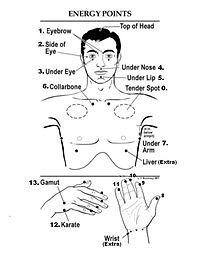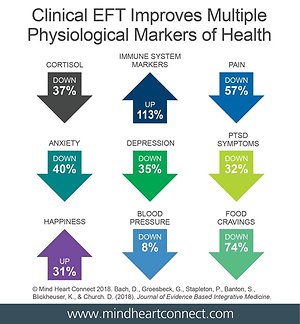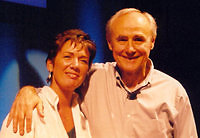EFT Tapping
EFT (Emotional Freedom Techniques) is a brief intervention combining elements of exposure cognitive therapy and somatic stimulation. It is often referred to as ' tapping’ as it uses a two-finger tapping process with a cognitive acceptance statement. EFT Tapping has moved in the past two decades from a fringe therapy to widespread professional acceptance and has been researched in more than 10 countries, by more than 60 investigators, whose results have been published in more than 20 different peer-reviewed journals.It has a growing database of over 320 Publications and 65 plus of randomized clinical trials. Tapping or EFT is a psychophysiological technique.
Recent research has shown that EFT appears to affect the amygdala (stress center in the brain) and hippocampus (memory center), and both play a role in the decision process when you decide if something is a threat. Recent research has shown Tapping or holding a sequence of Acupuncture points has a calming effect on the Amygdala the part of our brain responsible for the "Fight or Flight Response" as controlled by the Sympathetic Nervous System which is triggered by fear; real or imagined. Tapping seems to initiate the initiation of the Para-Sympathetic Nervous System which switches off the Fight or Flight mechanism and creates the Relaxation Response therefore enabling us to desensitise ourselves from our problems, faulty thinking, and negative mindset and create an environment wherein we can calmly reflect, review and make positive ecological changes to our thinking and feelings and behaviours. This accelerated process enables clients and therapists to work rapidly through layers of decisions and beliefs, memories, and emotions to treat the root cause of dysfunction.
The Facts - Acupressure Points - A Primo Vascular System
Researchers at Korea’s Seoul National University (SNU) in 2021, state they have confirmed the existence of meridians—a network of nodes and channels throughout the body - meridians and acupuncture points that form a system that is now called primo vascular system - (PVS), Prof. Kwang-Sup Soh, director of SNU’s Biomedical Physics Lab. for Korean Medicine. said that fine, threadlike structures had been observed with electron microscopes using dye.
By using a two-finger tapping process on acupuncture points the tapping is being converted into an electrical signal called Mecho Sensory Transduction - a physical electrical signal that's then transmitted (and collagen is suggested to be the transmitter) along that primo vascular system.
How Does It Work?
Using EFT Tapping we select and tune into the issue we want to release i.e. think the thought that creates the emotion or the uncomfortable feeling, or focus on a negative thought or limiting belief. While tuned into that thought /feeling /disturbance we stimulate specific acupressure points on the face and body. This then regulates the body’s stress response and has a calming effect on the emotional center of the brain (the amygdala) thereby reducing the response associated with stress and initiating The Relaxation Response in the Autonomic Nervous System producing many beneficial physiological changes. This facilitates a reprocessing of the negative associated emotion or the strength of the limiting belief which simply softens releases and dissolves away.
It's Simple! You focus on what you want to release and tap or hold the acupressure points at the same time. It is gentle with no drugs or equipment involved.
Dr Peta Stapleton, is a clinical and health psychologist and world researcher in EFT (Emotional Freedom Techniques) or Tapping. In 2019 Dr Peta was named Psychologist of the Year by the Australian Allied Health Awards, for her research contributions in EFT Tapping.
EFT (Emotional Freedom Techniques) or Tapping is a brief stress reduction intervention and uses a two-finger tapping process on acupuncture points with a cognitive statement.
EFT has been researched in clinical trials and has over 250 publications indicating its effectiveness for a range of concerns. In this video link below Dr Peta Stapleton, clinical and health psychologist and World researcher in EFT (Emotional Freedom Techniques) or Tapping outlines the physiological outcomes that occur after EFT, including DNA changes, brain and hormone changes.
https://youtu.be/GMa6Dv4OUrc?si=uZMwwDmV2botdAlJ
How Can It Help Me?
Since all human behaviour arises from a combination of our beliefs our thoughts and our emotions we now have EFT as an extraordinarily effective tool for real change. EFT has been clinically proven to be effective in 80% of cases for:
• Phobias
• Fears
• Panic & Anxiety
• Post-traumatic syndrome disorder
• Addictions
• Weight Issues
• Eating disorders( Anorexia/Bulimia)
• Abuse
• Depression
• Painful Memories
• Dyslexia
• Anger
• Pain Management
• Children’s anxieties
• ADD-ADHD
Peak Performance
Factors that limit an individual’s productivity:
• Stress
• Anxiety
• Fear of particular tasks
• Reluctance to rise to new challenges
• Fear and resistance to change
• Stress-related illness and absence
• Health challenges
• Effectiveness of one-to-one and public communication
• Quality of relationships, feelings towards colleagues, clients & customers
• Lack of motivation
• Low morale, negative feelings towards the company
• Speed of learning new tasks Stress at home effecting work
Research & Ongoing Developments
Sue Sawyer has specialised in EFT and is a Master Practitioner and Trainer of EFT. Sue has also attended “The Mastering EFT Workshops” with EFT founder Gary Craig, Dr David Lake and Steve Wells (SET- Simple Energy Techniques), and Robert G Smith (Faster EFT) who are all internationally recognized and innovative leaders and skilled practitioners.
Emotional Freedom Techniques (EFT) have moved in the past two decades from a fringe therapy to widespread professional acceptance. Many research studies show it to be an “evidence-based” practice.
Research Clinical EFT as an Evidence-Based Practice for the Treatment of Psychological and Physiological Conditions
Anxiety.
EFT has shown efficacy in several RCTs for anxiety. In one study, students with fear of public speaking received a 45-minute EFT session and improved significantly (Jones, Thornton, & Andrews, 2011). In another, high school students with test anxiety were evaluated before their university entrance exams (Sezgin & Özcan, 2009). Those who learned EFT improved significantly. A control group was taught progressive muscular relaxation. The improvement in the EFT group was significantly greater than that of the control group.
EFT was adopted by a clinic in Britain’s NHS, which performed a “service evaluation” to determine the acceptance of EFT by patients and its success in reducing symptoms. This study found a significant improvement in anxiety, with a mean treatment time frame of eight sessions. It also found a significant improvement in overall psychological health and physical functioning (Stewart et al., 2013).
Depression. RCTs in which depression was measured before and after EFT have demonstrated large drops in depressive symptoms. A study examining college students with high levels of depression (“clinical” depression as measured by the Beck Depression Inventory) found that they were in the “normal” range after EFT (Church, De Asis, & Brooks, 2012)
Phobias. Three RCTs have examined the effects of EFT on phobias and found that a single session is usually enough to resolve a phobia (Wells, Polglase, Andrews, & Carrington, 2003; Baker & Siegel, 2010; Salas, Brooks, & Rowe, 2011). All three studies included a follow-up period and found that the phobic responses of participants remained significantly lower than before treatment.
PTSD. EFT has been studied as a treatment for clinical PTSD in three RCTs. One, in a population of 59 war veterans, found that PTSD symptoms dropped into the “normal” range after six sessions of EFT and remained that way on follow-up (Church et al., 2013). A hospital in Britain’s National Health Service (NHS) compared EFT to another efficacious treatment, Eye Movement Desensitization and Reprocessing (EMDR), and found that both treatments normalized PTSD in an average of four sessions (Karatzias et al., 2011).
Pain and physical symptoms. Veterans were found to experience significant drops in physical pain after EFT (Church, 2013b), as were fibromyalgia sufferers (Brattberg, 2008). When PTSD symptoms were remediated in veterans, symptoms of traumatic brain injury (TBI) were reduced by 41% (p < .0021; Church & Palmer-Hoffman, 2013).
An RCT of patients with tension headaches performed at the Red Cross Hospital in Athens found that the frequency and intensity of their headaches dropped by more than half after EFT, and other physical symptoms improved ; Bougea et al., 2013).
Insomnia. Three studies have examined the effect on insomnia after EFT. The veterans PTSD study referenced above (Church et al., 2013) found a significant improvement in insomnia scores, with mean values dropping from the clinical range to the subclinical range (p < .001). A pilot study of 10 geriatric patients with insomnia noted a similar reduction in insomnia, along with decreases in anxiety and depression, and an increase in life satisfaction (Lee, Suh, Chung, & Kim, 2011). This led to an RCT conducted with 20 participants that compared EFT to an active control, Sleep Hygiene Education (Lee & Kim, 2013). It demonstrated significant reductions in depression and insomnia. Insomnia is related to stress and to the regulation of the autonomic nervous system; the improvements found in these studies demonstrate the association between a reduction in stress symptoms and decreases in insomnia.
Weight loss and cravings. Studies have examined the use of EFT for weight loss and food cravings. An RCT found that EFT improved restraint (Stapleton, Sheldon, Porter, & Whitty, 2011) and that, in the year following an EFT weight loss program, participants lost an average of 11.1 pounds (Stapleton, Sheldon, & Porter, 2012). An uncontrolled study of clients in a 6-week online weight loss program found a 12-pound weight reduction during the 6 weeks of the program, followed by a further 3-pound drop in the ensuing 6 months (p < .001; Church & Wilde, 2013). In the health care workers study (Church & Brooks, 2010) summarized previously, cravings for substances such as chocolate, sweets, and alcohol were reduced by 83% (p < .001). Group application of EFT was also found to reduce psychological symptoms such as anxiety in a group self-identified with addiction issues (Church & Brooks, 2013b). A review found that EFT could also be useful as an adjunctive therapy for weight loss (Sojcher, Perlman, & Fogerite, 2012).
Extract from Research Paper - Psychology
2013. Vol.4, No.8, 645-654
Published Online August 2013 in SciRes www.scirp.org/journal/psych)
Gary Craig - The EFT Tapping Home!
Sue Sawyer is pictured here with Gary Craig the founder of Emotional Freedom Techniques (EFT) who in 1995 brought EFT to the World. If you want to know more about the original EFT Tapping Therapy for Gary's Official EFT Tapping Instruction, please visit his website www.emofree.com





